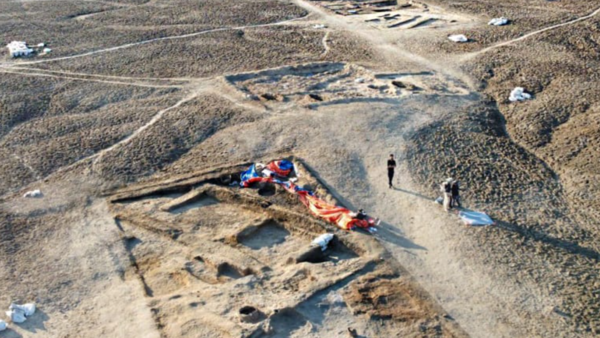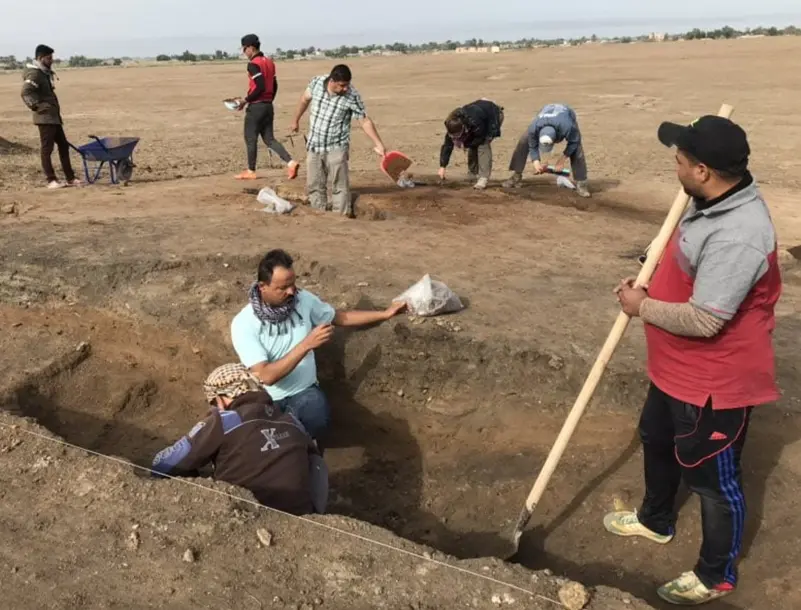Iraq.. A 5,000-Year-Old Tavern Was Found That Included Leftover Food And A “Refrigerator”

Archaeologists in Iraq have discovered an ancient tavern dating back to 2,700 BC, which would indicate that eating out was common 5,000 years ago.
Researchers working in the ancient city of Lagash noticed that the tavern was divided into an outdoor dining area, and a room containing benches, an oven, and leftovers, as well as a 5,000-year-old refrigerator.
The bar was located 19 inches below the surface of the earth.
The researchers initially found themselves inside the open plaza, an area that was difficult to excavate because it was "open and exposed," University of Pennsylvania archaeologist Reed Goodman told CNN.
After returning to the “mysterious” scene in the fall of 2022, the field director from the University of Pisa, Sarah Pesementi, widened the excavation trench.

The team discovered the industrial-sized oven, an old “refrigerator” that absorbs moisture to keep food cool, and dozens of conical bowls, many of which contained fish scraps, revealing the purpose of the yard and its use as an outdoor dining area.
“I think the very large kiln was the first feature to reveal itself,” Goodman said. “Various combustion processes and ash deposits have left the soil sort of rainbow colors, and the interior is framed by large bricks.”
Lagash, which is referred to today as the town of Heba, was one of the oldest and largest cities in southern Mesopotamia, and was inhabited by people from the fifth millennium to the middle of the second millennium BC.
It had an area of about two square miles.
The ancient city has become an important archaeological site, and excavations recently resumed in 2019 as part of a joint project between the Pennsylvania Museum, the University of Cambridge, and the General Authority for Antiquities and Heritage in Baghdad, using new technologies such as drone imaging and genetic analysis.
Previous excavations focused on religious architecture and understanding of the elite classes, but Holly Pittman, director of the Lagash archaeological project and curator of the Near East Department of the Pennsylvania Museum, focused on non-elite class areas during recent excavations to further understand ancient cities.

The discovery of the tavern supported Bateman and her team's view that society was not divided into an elite class, and only people subject to slavery, which was the previously dominant view, as it also included an old middle class.
“You have a public gathering place where people can sit, enjoy a drink, eat fish soup, they don't work under the tyranny of kings,” Goodman said, adding, “It gave us a much more vibrant history of the city.”
Source : websites

